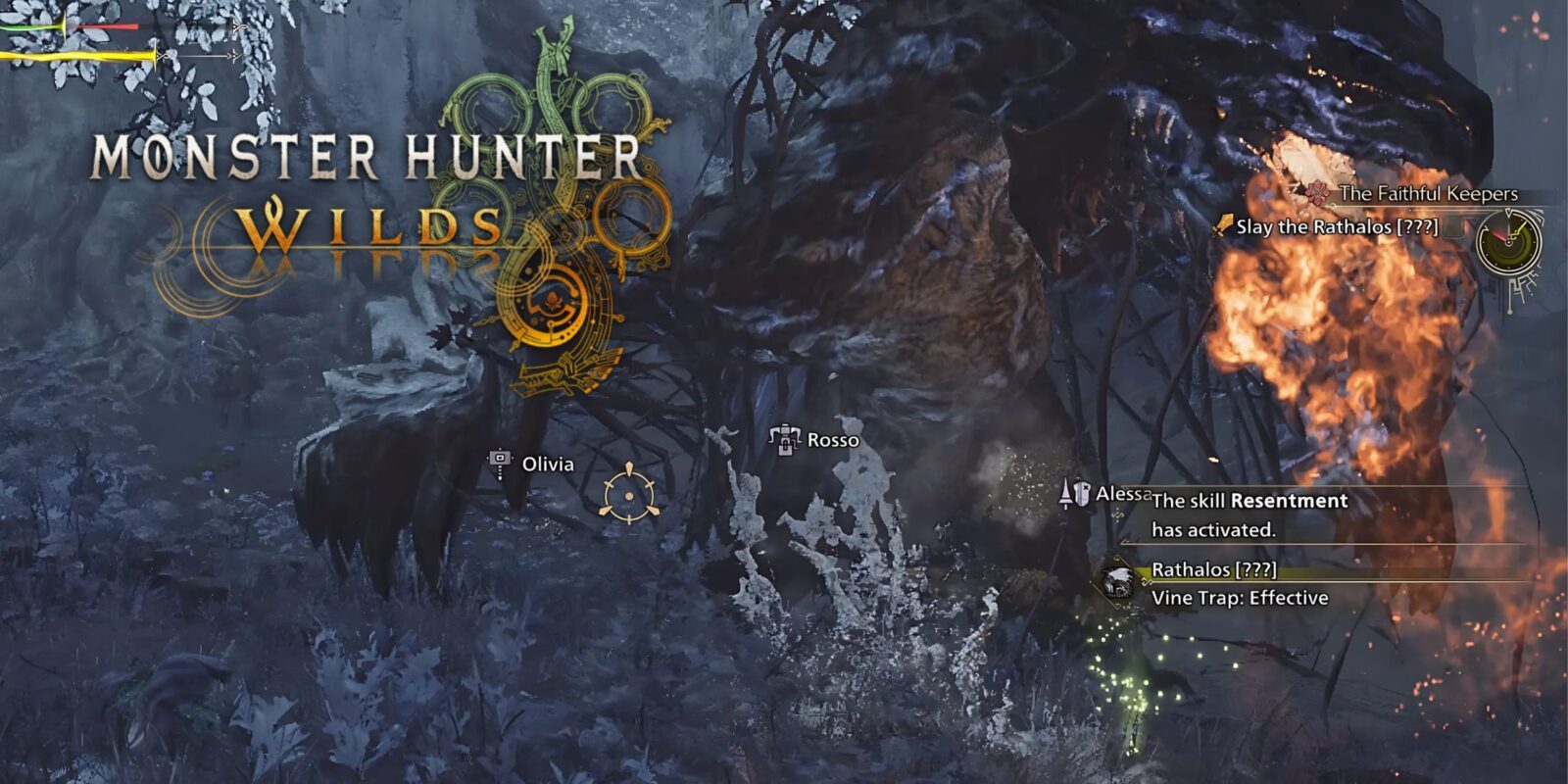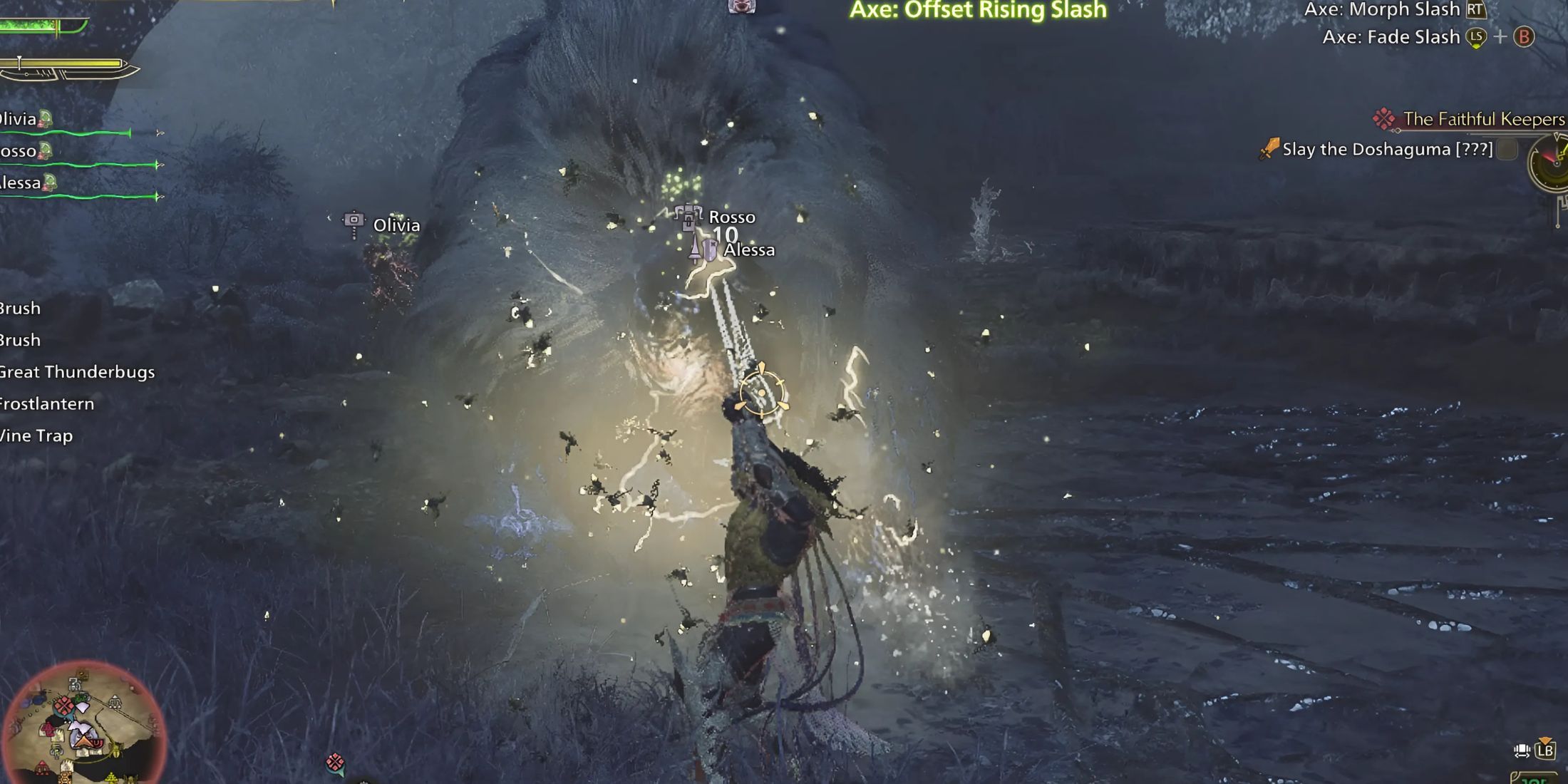Monster Hunter Wilds is a puzzle game that’s cleverly disguised as an action RPG. While most newcomers will approach the hunts with a Hack-and-Slash mentality, veterans of the series know that defeating the Monster is about understanding their weaknesses and exploiting them efficiently.
The different arenas where you fight these monsters can often have environmental hazards that you can activate to give you an edge. Activating these traps can help you stagger monsters and create big openings for you to deal damage. In this guide, we’ll showcase all the environmental traps in Monster Hunter Wilds and how you can use them to gain an edge in combat.

Related
How To Get Gracium In Monster Hunter Wilds
Gracium is a high-level material in Monster Hunter Wilds that does not drop earlier in the game.
All Environmental Traps in Monster Hunter Wilds
Below is a list of all the environmental traps you’ll encounter in Monster Hunter Wilds:
|
Environmental Trap |
How it Works |
|---|---|
|
Falling Boulder |
Often found in caves. Use the Hook Slinger to bring them crashing down on the monster, dealing heavy damage and staggering them. Variations include Sharp Crystal Pillars, Falling Slacite, Dark Hornet Nest, etc. |
|
Vine Traps |
Found near trees. Activate the trap and lure a monster into it to immobilize it for a short duration. |
|
Paratoad |
Small endemic creatures that release paralytic gas when activated. Use your Slinger to trigger them from a safe distance, paralyzing any nearby Monster. |
|
Sleeptoad |
Similar to Paratoads, but instead of paralysis, they put monsters to sleep when activated. |
|
Nitrotoad |
Similar to Paratoads. After activation, it releases a bomb that explodes, damaging anything nearby and leaving an ignited area. |
|
Posiontoad |
Releases a toxic cloud once activated that can poison a monster caught in its AOE. |
|
Great Thunderbug |
Once activated, these bugs release electric shocks, stunning monsters that come into contact with them. Unlike Paratoads, they do not affect hunters. |
|
Flashflies |
These bugs emit a blinding flash when disturbed, causing nearby monsters to miss attacks. The flash can also bring down flying monsters like Rathalos. |
The effects of Paratoads, Sleeptoads, Poisontoads, and Nitrotoads can also affect the Hunter if they’re too close.
Apart from these, you can also occasionally find special environmental traps that you can use in battle. During the quest Long-forgotten Flame, when you’re hunting an Ajarakan, you’ll be able to use The Ancient Forge to deal big damage to the monster.
How to Use Environmental Traps
To use Environmental Traps in Monster Hunter Wilds, all you have to do is interact with them. This can be done in two ways: you can either run up to it and press the interact button. Alternatively, you can use your Hook Slinger to activate it remotely.
For Falling Boulders or Sharp Crystal Pillars, using Slingers is the only way to activate them since you can’t reach them on your own. Paratoads or Sleeptoads are also best activated remotely since you can also get affected by these traps. However, it’s better to activate Flashflies, Vine Traps, and Great Thunderbugs manually since you need to lure the Monster towards it anyway.
You can use some traps multiple times within a single hunt.
Environmental Traps can add another layer of depth to how you take down a Monster. These mostly serve as utility, and while they don’t do the most damage, they create excellent openings for you to deal the killing blow. Learning how to utilize them effectively in battle is a great way to gain the upper hand in Monster Hunter Wilds.















Leave a Reply